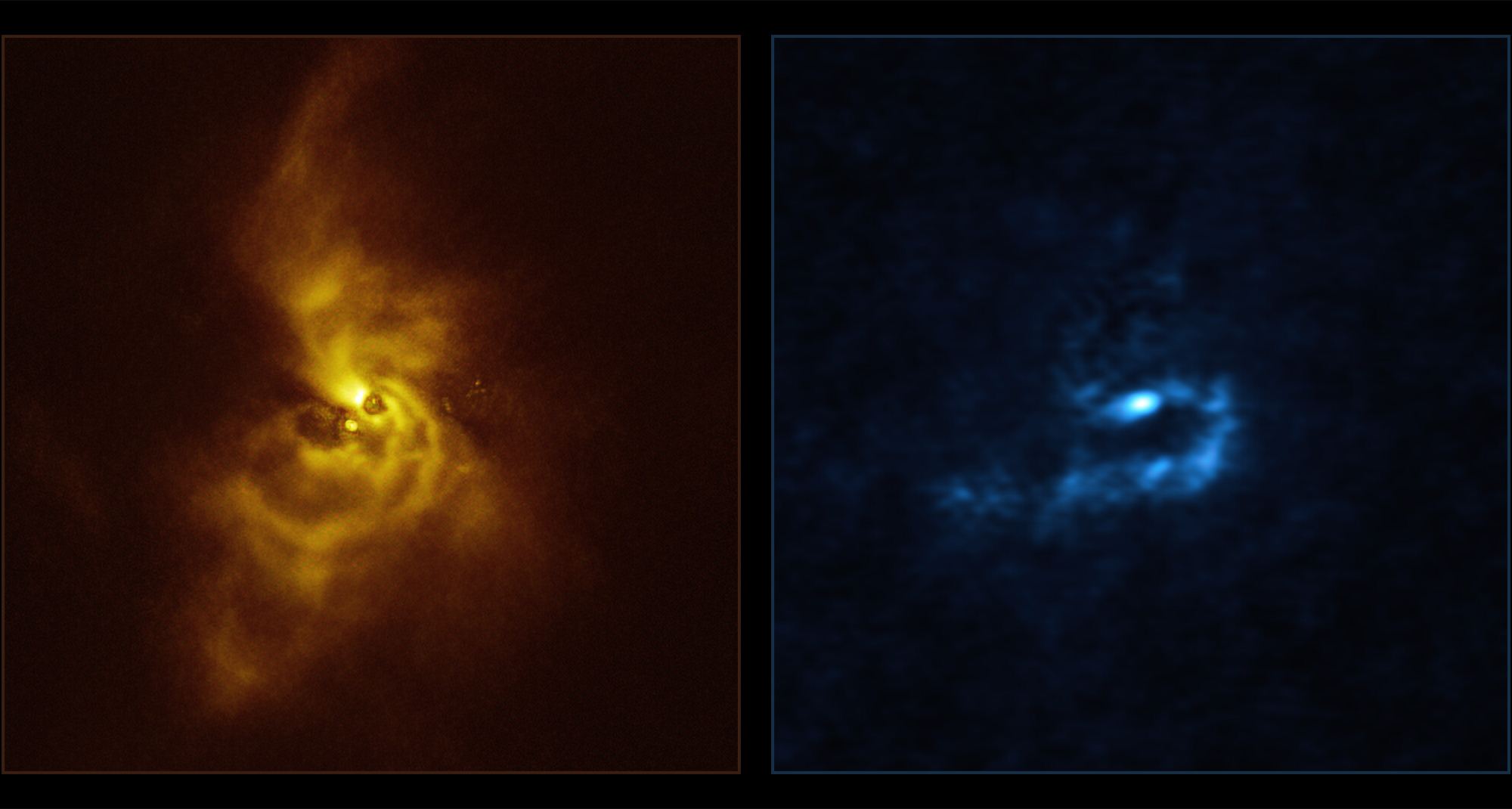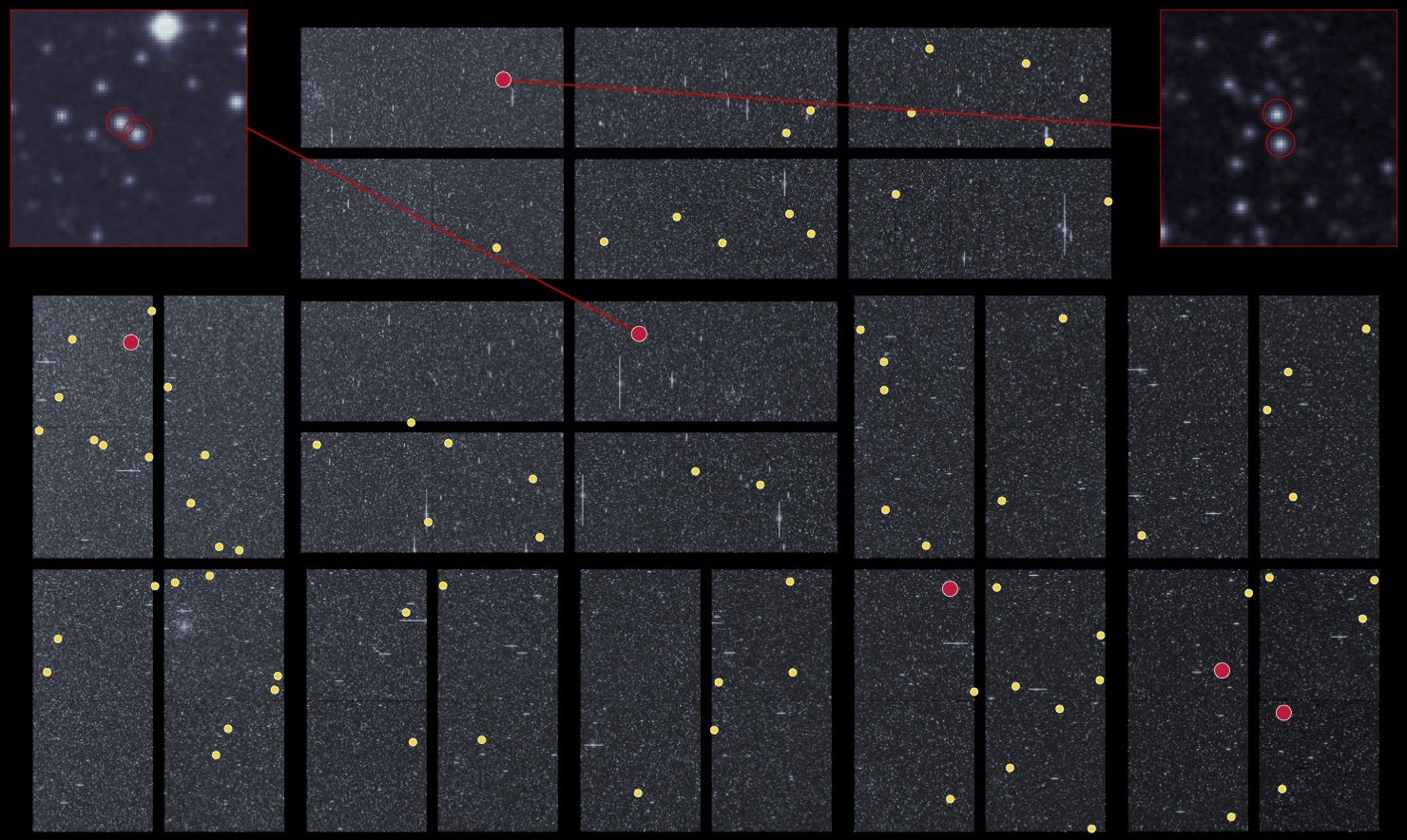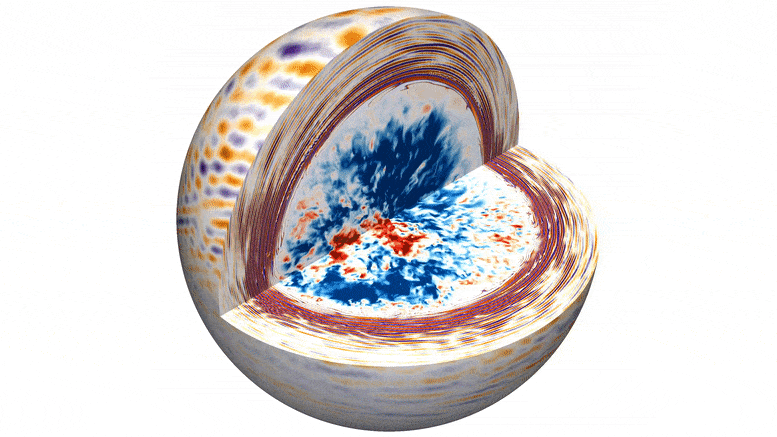Aliens are big in the news recently, fueled by congressional hearings about Unidentified Anomalous Phenomena (UAPs), formally known as UFOs. But while the idea of aliens visiting Earth may be exciting, the better bet is still the idea that aliens might exist on distant worlds. We already know potentially habitable planets are common and intelligent life has arisen on at least one world, so why not many? But after 60 years of searching for evidence of extraterrestrials “out there,” we’ve found nothing. So what does that tell us?
Continue reading “What Does 60 Years of Silence Tell Us About the Search for Extraterrestrials?”New Simulation Reveals the Churning Interiors of Giant Stars
On a basic level, a star is pretty simple. Gravity squeezes the star trying to collapse it, which causes the inner core to get extremely hot and dense. This triggers nuclear fusion, and the heat and pressure from that pushes back against gravity. The two forces balance each other while a star is in its main sequence state. Easy peasy. But the details of how that works are extremely complex. Modeling the interior of a star accurately requires sophisticated computer models, and even then it can be difficult to match a model to what we see on the surface of a star. Now a new computer simulation is helping to change that.
Continue reading “New Simulation Reveals the Churning Interiors of Giant Stars”Chinese Scientists Complete a Concept Study for a 6-Meter Space Telescope to Find Habitable Exoplanets
We have discovered more than 5,400 planets in the universe. These worlds range from hot jovians that closely orbit their star to warm ocean worlds to cold gas giants. While we know they are there, we don’t know much about them. Characteristics such as mass and size are fairly straightforward to measure, but other properties such as temperature and atmospheric composition are more difficult. So the next generation of telescopes will try to capture that information, including one proposed telescope from the Chinese National Space Administration.
Continue reading “Chinese Scientists Complete a Concept Study for a 6-Meter Space Telescope to Find Habitable Exoplanets”Clumps Around a Young Star Could Eventually Turn Into Planets Like Jupiter

From the dust, we rise. Vortices within the disks of young stars bring forth planets that coalesce into worlds. At least that’s our understanding of planetary evolution, and new images from the Atacama Large Millimeter/submillimeter Array (ALMA) and the Very Large Telescope’s Spectro-Polarimetric High-contrast Exoplanet REsearch (SPHERE) further support this.
Continue reading “Clumps Around a Young Star Could Eventually Turn Into Planets Like Jupiter”A Gamma Ray Burst Lasted So Long it Triggered a Satellite Twice

Gamma Ray Bursts (GRBs) are the most powerful astrophysical phenomena in the universe. For a span of seconds to a few minutes, they can be the most powerful high-energy event in the sky, shining across billions of light years. But recently astronomers detected a GRB that lasted more than a thousand seconds, with two blasts of gamma rays that triggered the Fermi Gamma Ray Burst Monitor. It’s such a strange cosmic event that astronomers aren’t sure what caused it, but they do have a possible idea.
Continue reading “A Gamma Ray Burst Lasted So Long it Triggered a Satellite Twice”Astronomers Have a New Trick to Work out the Age of Stars

Twinkle, twinkle little star, I wonder just how old you are.
It isn’t an easy question to answer. Stars are notoriously difficult to age. We know the age of the Sun because we happen to live on one of its orbiting rocks, and we know very well how old the rock is. Without that information, things become a bit more fuzzy. But that could change thanks to a new study.
Continue reading “Astronomers Have a New Trick to Work out the Age of Stars”Venus Needed Asteroid Impacts to Get its Volcanoes Going
With its thick, cloudy atmosphere, Venus has long held mysteries about its surface. It was only in the late 20th century that astronomers had detailed observations of the Venusian landscape, with the Russian Venera landers in the 1970s and 1980s, and later the 1990 Magellan mission, which made high-resolution radar maps of the surface. There are many things we still don’t know, but one thing we do know is that the surface of Venus is young. And a new study in Nature Astronomy may know why.
Continue reading “Venus Needed Asteroid Impacts to Get its Volcanoes Going”One Side of This White Dwarf is Covered in Hydrogen While the Other Side is Helium.
Sunlike stars and those smaller than the Sun end their lives as white dwarfs. Without a continued source of energy from hydrogen fusion, these stars eventually collapse under their own weight. They would continue collapsing were it not for the pressure of electrons. As long as the remaining mass of a star is less than about 1.4 Suns, the electron pressure and gravitational pull will balance each other, creating a white dwarf.
Continue reading “One Side of This White Dwarf is Covered in Hydrogen While the Other Side is Helium.”Thin Flat Lenses Could Unleash a Revolution in Space Telescopes

Thanks to the laws of physics, there are two basic rules about telescopes. The first is that the bigger your primary lens or mirror, the higher the resolution of your telescope. The second is that lenses and mirrors have to be curved to focus light into an image. So, if you want a space telescope sensitive enough to see the atmospheres of distant exoplanets, Your telescope is going to need a large curved mirror or lens. But neither of these things is technically true, as a newly proposed telescope design demonstrates.
Continue reading “Thin Flat Lenses Could Unleash a Revolution in Space Telescopes”Did That Message Come From Earth or Space? Now SETI Researchers can be Sure

In radio astronomy, there are lots of natural radio signals to observe. The glow of hydrogen gas, the swirl of electrons along a magnetic field, or the pop-pop-pop of pulsars. These signals usually have a very natural character to them, so astronomers can distinguish them from the artificial chirps and chatters of terrestrial sources. But when you’re looking for the signals of alien civilizations, things can get more tricky. They should have an artificial character similar to the radio signals of humans. So how can astronomers distinguish between the distant artificial signal and the local ones?
Continue reading “Did That Message Come From Earth or Space? Now SETI Researchers can be Sure”




